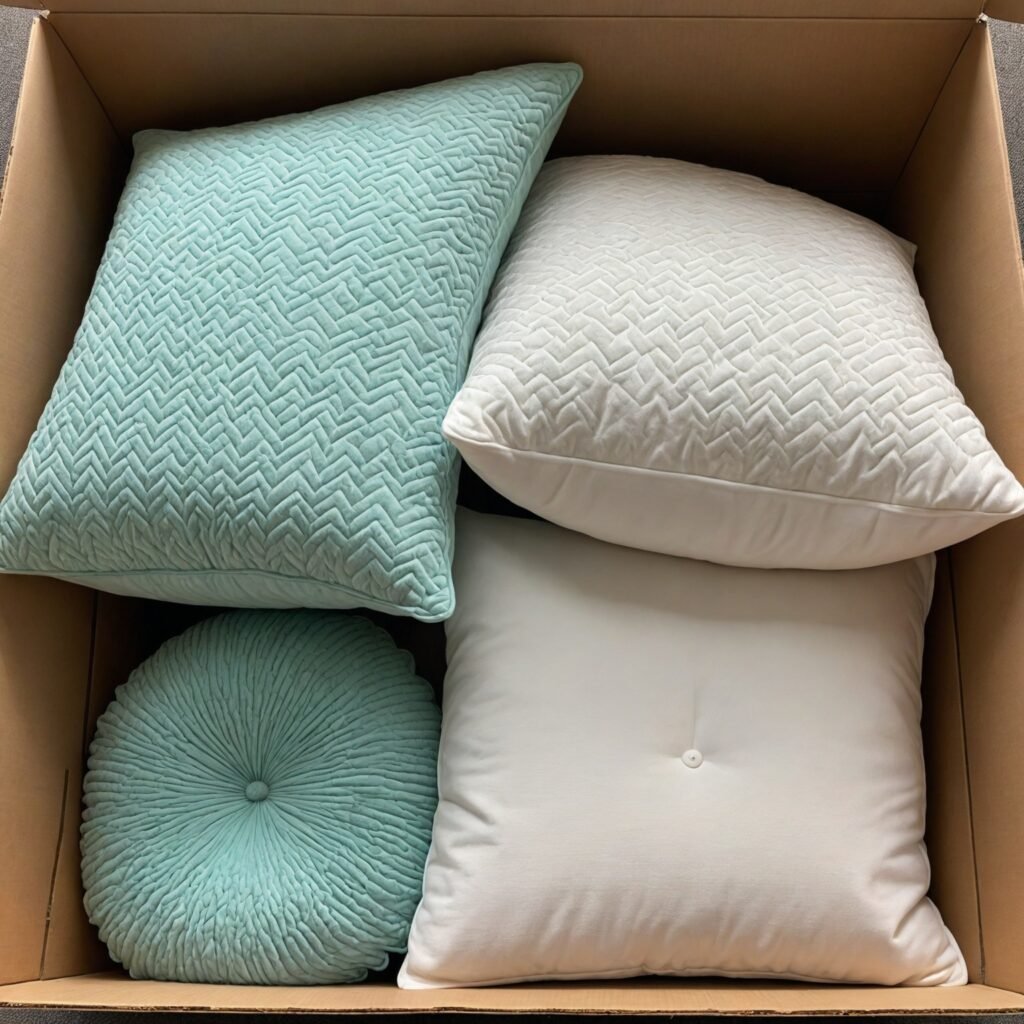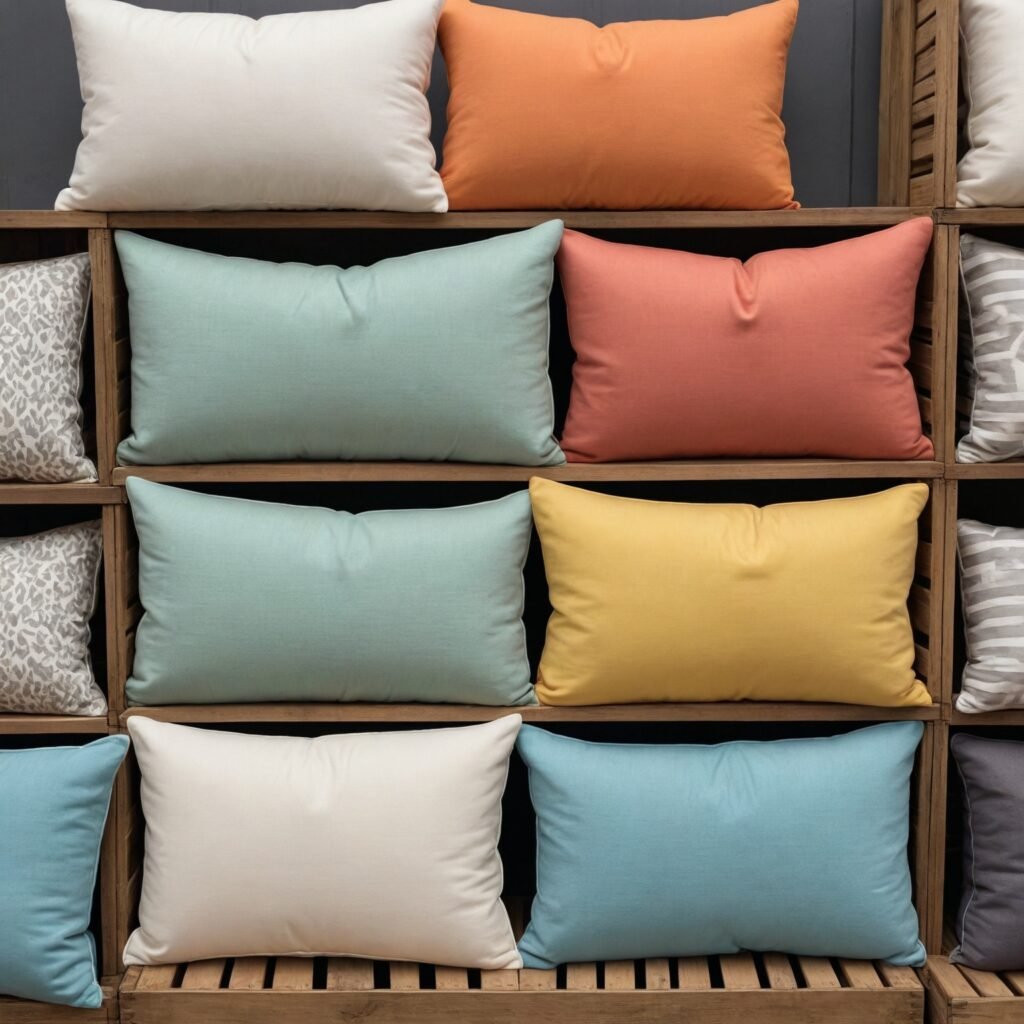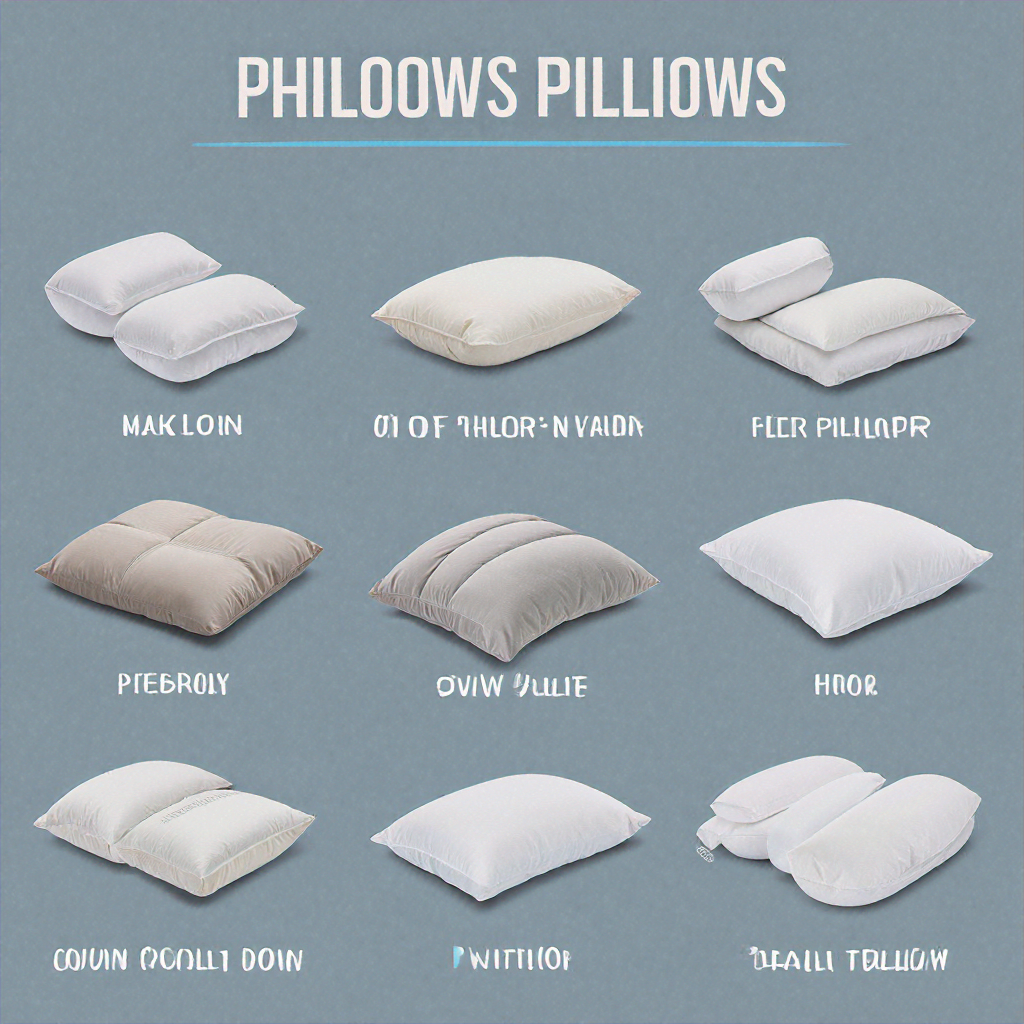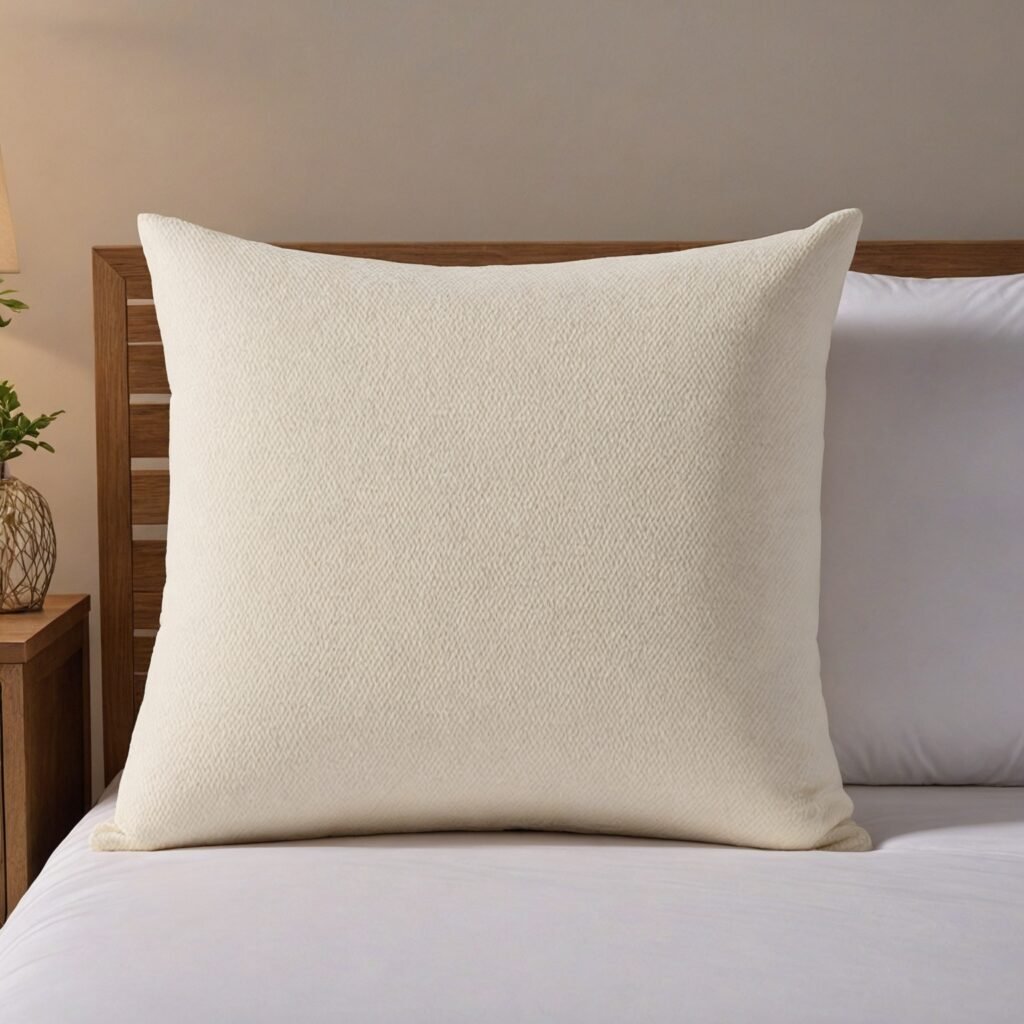Do you wake up with a stiff neck or spend the night tossing and turning? The culprit might be your pillow. As we enter 2024, finding the perfect pillow has become more crucial than ever for achieving restful sleep and maintaining proper spinal alignment. With an overwhelming array of options on the market, choosing the right pillow can feel daunting. Fear not – this guide will equip you with the top five tips for selecting the best pillow to suit your unique needs. By considering factors such as sleeping position, material composition, and personal preferences, you’ll be well on your way to transforming your sleep experience and waking up refreshed every morning.
Consider Your Sleeping Position
Your sleeping position plays a crucial role in determining the ideal pillow for optimal comfort and support. Understanding how different sleep postures affect your body’s alignment can guide you toward making an informed decision when selecting a pillow.
Back Sleepers
A medium-loft pillow is often the best choice for those who prefer sleeping on their backs. This type of pillow provides adequate support to maintain proper spinal alignment while cradling the natural curve of your neck. Look for pillows with a slight contour that offers enhanced support for the cervical spine. Memory foam or latex pillows are excellent options as they conform to your head and neck, distributing pressure evenly.
Side Sleepers
Side sleepers typically require a firmer, higher-loft pillow to fill the gap between their head and shoulders. This helps maintain a neutral spine position and prevents neck strain. Consider pillows specifically designed for side sleepers, which often feature a gusseted design or extra fill to provide the necessary height and support. Materials like shredded memory foam or buckwheat hulls allow for customizable loft and firmness.

Stomach Sleepers
If you tend to sleep on your stomach, opt for a soft, low-loft pillow to minimize neck strain. A thin pillow or even no pillow at all may be preferable to keep your spine in a neutral position. Look for pillows made from down or down alternative materials, which offer a plush feel and can be easily molded to your comfort level.
Combination Sleepers
For those who frequently change positions throughout the night, an adjustable pillow might be the ideal solution. These pillows allow you to add or remove fill to accommodate different sleep positions. Alternatively, consider pillows with varying zones of support that cater to multiple sleeping styles.
Remember, your body weight and shoulder width can also influence the ideal pillow height and firmness. Experiment with different options to find the perfect balance of comfort and support for your unique sleeping habits.
Determine Your Ideal Pillow Loft
Pillow loft, or height, plays a crucial role in achieving optimal sleep posture and comfort. Your ideal loft depends on various factors, including your sleeping position, body type, and mattress firmness. By understanding these elements, you can select a pillow that provides the right support for a restful night’s sleep.
Sleeping Position Considerations
Your preferred sleeping position significantly influences the ideal pillow loft:
- Side sleepers typically require a high loft pillow to fill the gap between the shoulder and neck, maintaining proper spinal alignment.
- Back sleepers generally benefit from a medium loft pillow that supports the natural curve of the neck without pushing the head too far forward.
- Stomach sleepers often need a low loft pillow or no pillow at all to prevent neck strain and maintain a neutral spine position.
Body Type and Mattress Firmness
Your body type and mattress firmness also impact the ideal pillow loft:
- Individuals with broader shoulders or larger body frames may need higher loft pillows to maintain proper alignment, especially when side sleeping.
- Those with petite frames often find lower loft pillows more comfortable, as they require less elevation to achieve optimal neck support.
- If you have a firm mattress, you might need a slightly higher loft pillow to compensate for reduced shoulder sinkage. Conversely, softer mattresses may require lower loft pillows.
Adjustable Loft Options
Consider pillows with adjustable loft features for versatility:
Some pillows allow you to add or remove filling material, enabling you to customize the loft to your preference. This adaptability is particularly beneficial if you tend to switch sleeping positions throughout the night or if your needs change over time.
By carefully evaluating these factors and experimenting with different loft heights, you can determine the ideal pillow loft that promotes proper spinal alignment, reduces pressure points, and enhances your overall sleep quality. Remember that personal comfort is paramount, so don’t hesitate to try various options until you find the perfect fit for your unique needs.

Choose the Right Pillow Fill Material
Selecting the appropriate pillow fill material is crucial for achieving optimal comfort and support during sleep. Your choice can significantly impact your sleep quality and overall well-being. Consider the following options to make an informed decision:
Natural Fill Materials
Natural fill materials offer breathability and temperature regulation. Down, derived from duck or goose plumage, provides exceptional softness and insulation. However, it may not be suitable for those with allergies. Feather pillows, while less expensive, can be firmer and may occasionally poke through the pillow cover.
Wool is another natural option, known for its moisture-wicking properties and resistance to dust mites. Cotton fills are hypoallergenic and provide firm support, ideal for those who prefer a flatter pillow.
Synthetic Fill Materials
Synthetic materials offer durability and are often hypoallergenic. Memory foam conforms to your head and neck, providing excellent support for those with neck pain or alignment issues. However, it may retain heat and have an initial odor.
Polyester fiberfill is an affordable, easy-to-clean option that mimics the feel of down. It’s suitable for those with allergies but may flatten over time. Latex pillows offer resilience and durability, with natural antimicrobial properties. They provide firm support but can be heavy and expensive.
Specialty Fill Materials
For those seeking unique benefits, consider specialty fill materials. Buckwheat hulls offer customizable support and excellent air circulation but may be noisy when shifting. Microbead pillows, filled with tiny polystyrene beads, provide moldable support similar to buckwheat but with a smoother feel.
Water pillows allow you to adjust the firmness by adding or removing water, providing personalized support. However, they can be heavy and may require occasional refilling.
When choosing your pillow fill material, consider your sleeping position, any health concerns, and personal preferences for firmness and texture. Remember that the right fill material can significantly enhance your sleep quality and contribute to better overall health and well-being.

Look for Quality Construction and Durability
When selecting the perfect pillow for your sleep needs, it’s crucial to prioritize quality construction and durability. These factors not only ensure your investment lasts longer but also contribute significantly to your overall sleep experience.
Materials Matter
The materials used in pillow construction play a vital role in its longevity and performance. High-quality pillows often feature premium materials such as memory foam, latex, down, or hybrids of these. Each material offers unique benefits:
- Memory foam molds to your head and neck, offering exceptional support.
- Latex offers natural bounce and breathability.
- Down provides luxurious softness and malleability.
When examining pillow materials, look for certifications like CertiPUR-US® for foam or Responsible Down Standard (RDS) for down pillows. These certifications ensure the materials meet strict quality and environmental standards.
Construction Techniques
The way a pillow is constructed can significantly impact its durability. Pay attention to:
- Stitching quality: Look for reinforced edges and tight, even stitching.
- Fill distribution: Ensure the fill is evenly distributed and doesn’t clump.
- Cover material: Opt for breathable, durable fabrics like cotton or bamboo.
High-quality pillows often feature gussets, which are side panels that add structure and help maintain the pillow’s shape over time.
Longevity Indicators
To gauge a pillow’s potential lifespan, consider these factors:
- Warranty length: A longer warranty often indicates the manufacturer’s confidence in the product’s durability.
- Customer reviews: Look for feedback from long-term users to get insights into the pillow’s performance over time.
- Care instructions: Pillows with easy-to-follow care guidelines tend to maintain their quality longer.
Remember, a well-constructed, durable pillow may come with a higher price tag, but it’s an investment in your sleep quality and overall health. By choosing a pillow that’s built to last, you’ll enjoy consistent comfort and support night after night, potentially improving your sleep quality and reducing the need for frequent replacements.
Try Different Pillow Sizes and Shapes
| Pillow Type | Dimensions | Description |
|---|---|---|
| Standard Pillow | 20″ x 26″ | Common size for various bed sizes; versatile and widely used. |
| Queen Pillow | 20″ x 30″ | Ideal for queen-sized beds; provides more coverage and enhances aesthetics. |
| King Pillow | 20″ x 36″ | Suitable for king-sized beds; offers extra width and comfort. |
| Body Pillow | 20″ x 54″ | Provides full-body support; ideal for side sleepers or pregnant women. |
| Contour Pillow | Varies | Features a curved shape; supports neck and aligns spine to reduce neck pain and improve sleep posture. |
Customizable Options
Some manufacturers now offer customizable pillows that allow you to adjust the fill level or even the shape. These innovative options enable you to experiment with different configurations until you find your ideal comfort level. You might consider pillows with removable inserts or those that allow you to add or remove filling material to achieve your desired loft and firmness.
Testing Period
When trying different pillow sizes and shapes, it’s advisable to take advantage of trial periods offered by many retailers. This allows you to test the pillow in your bed for an extended period, typically 30 to 100 nights. During this time, pay attention to how you feel upon waking and whether you experience any neck or shoulder discomfort. Remember, it may take a few nights for your body to adjust to a new pillow, so be patient during the evaluation process.
Combination Approaches
Some sleepers find that a combination of pillow sizes and shapes works best for them. For example, you might use a standard-sized memory foam pillow for head support, coupled with a small lumbar pillow for lower back support. Experimenting with different combinations can help you create a personalized sleep environment that caters to your unique needs and preferences.
Wash Pillows Regularly For Hygiene and Longevity
Maintaining clean pillows is essential for both your health and the longevity of your bedding. Regular washing not only ensures a hygienic sleeping environment but also extends the life of your pillows. Here’s why and how you should incorporate pillow washing into your cleaning routine.
The Importance of Clean Pillows
Your pillows accumulate a variety of unwanted substances over time. Sweat, dead skin cells, and dust mites can build up, potentially leading to allergies and irritations. By washing your pillows regularly, you eliminate these allergens and create a fresher, more comfortable sleeping surface.
Additionally, clean pillows maintain their shape and support better than neglected ones. Removing accumulated dirt and oils helps preserve the pillow’s structure, ensuring it continues to provide the comfort and support you need for a good night’s sleep.
How to Wash Your Pillows
Most pillows can be machine washed, but always check the care label first. Here’s a general guide:
- Remove pillowcases and protectors.
- Use warm water and a mild detergent.
- Include an additional rinse cycle to make sure all the soap is completely washed out.
- Dry thoroughly on low heat with dryer balls to prevent clumping.
For memory foam or other specialty pillows that can’t be machine washed, spot cleaning and regular airing out in sunlight can help maintain freshness.
Frequency of Washing
Aim to wash your pillows at least twice a year, or every three to four months for optimal hygiene. However, if you have allergies or live in a humid climate, more frequent washing may be beneficial. Between washes, using pillow protectors and changing pillowcases weekly can help keep your pillows cleaner for longer.
By incorporating regular pillow washing into your home maintenance routine, you’re not only investing in your health but also the longevity of your bedding. Clean pillows contribute to better sleep quality and can save you money in the long run by extending the life of your pillows.

Make Sure Your Pillow Fits Your Mattress
When selecting the perfect pillow, it’s crucial to consider how it will complement your mattress. A well-matched pillow-mattress combination can significantly enhance your sleep quality and overall comfort. Here’s why pillow-mattress compatibility matters and how to achieve it.
Understanding Pillow-Mattress Synergy
Your pillow and mattress work together to provide proper spinal alignment and support. A pillow that’s too high or too low on your mattress can lead to neck pain, poor sleep posture, and restless nights. To ensure optimal comfort, you need to consider your mattress type, sleeping position, and body size when choosing a pillow.
Matching Pillow Height to Mattress Firmness
The firmness of your mattress directly affects the ideal pillow height:
- Firm mattresses: Require higher pillows to fill the gap between your head and shoulders.
- Soft mattresses: Need lower pillows as your body sinks deeper into the mattress surface.
For example, if you have a memory foam mattress that conforms to your body shape, you’ll likely need a thinner pillow compared to what you’d use on a firm innerspring mattress.
Considering Sleeping Position
Your preferred sleeping position also plays a crucial role in pillow selection:
- Side sleepers: Need thicker pillows to keep the head aligned with the spine.
- Back sleepers: Require medium-height pillows for proper neck support.
- Stomach sleepers: Benefit from thin, soft pillows to maintain neutral spine alignment.
Always test your pillow on your actual mattress to ensure it provides the right level of support for your sleeping style.
Adjustable Options for Versatility
If you’re unsure about the perfect pillow height or if your mattress firmness varies, consider an adjustable pillow. These pillows allow you to add or remove filling to achieve the ideal height and firmness for your specific needs, ensuring a perfect fit with your mattress regardless of its characteristics.
By taking the time to find a pillow that complements your mattress, you’ll create a sleep environment tailored to your body’s unique requirements, promoting better rest and overall well-being.
Invest in Comfortable and Soft Pillow Cases
When selecting the perfect pillow for a restful night’s sleep, don’t overlook the importance of high-quality pillowcases. Your choice of pillowcase can significantly impact your comfort and sleep quality. Here’s why investing in comfortable and soft pillowcases is crucial:
Material Matters
The material of your pillowcase plays a vital role in your sleep experience. Opt for natural fibers like cotton, silk, or bamboo for their breathability and softness. These materials help regulate temperature and wick away moisture, keeping you cool and comfortable throughout the night. Add an extra rinse cycle to ensure all the soap is fully removed. Thread Count Considerations
While shopping for pillowcases, pay attention to the thread count. A higher thread count usually signifies a softer and more durable fabric. However, don’t be fooled by extremely high numbers; a thread count between 300 and 600 is often ideal for comfort and longevity. Remember, the quality of the fibers is just as important as the quantity.
Hypoallergenic Options
If you have sensitive skin or allergies, consider hypoallergenic pillowcases. These are designed to resist dust mites, mold, and other allergens that can accumulate in bedding. Look for pillowcases labeled as hypoallergenic or made from naturally antimicrobial materials like silk or bamboo.
Care and Maintenance
Invest in pillowcases that are easy to care for and maintain their quality over time. Look for options that are machine washable and resistant to wrinkling. Some high-quality pillowcases may require special care, so be sure to read and follow the manufacturer’s care instructions to preserve their comfort and appearance.
Perfect Fit
Ensure your pillowcases fit your pillows properly. Ill-fitting cases can bunch up, creating an uncomfortable sleeping surface. Measure your pillows and choose cases that match their dimensions for a smooth, wrinkle-free surface that enhances your overall sleep experience.
By investing in comfortable and soft pillowcases, you’re not just adding a layer of luxury to your bedding; you’re actively improving your sleep quality and overall well-being. Remember, the right pillowcase can transform even an average pillow into a more comfortable sleep surface.
Top 5 Tips FAQ: Your Most Common Pillow Questions Answered
How often should I replace my pillow?
You should replace your pillow every 1-2 years. Pillows gradually collect dead skin cells, dust mites, and other allergens. Additionally, they lose their shape and support.
If you wake up with neck pain or notice your pillow is lumpy, it’s time for a replacement. Memory foam pillows may last slightly longer, up to 3 years, if well-maintained.

What’s the best pillow for side sleepers?
Side sleepers typically need a firmer, higher loft pillow to keep their head and neck aligned with their spine. Look for pillows specifically designed for side sleeping, often made from memory foam or latex. These materials offer excellent support and conform to your head and neck. A pillow with a gusset (extra fabric panel for added height) can also be beneficial for side sleepers.
Can pillows help with snoring?
Yes, the right pillow can potentially reduce snoring. Elevating your head slightly can help keep your airways open. Consider wedge pillows or adjustable pillows that allow you to customize the height. For back sleepers prone to snoring, a pillow that encourages side sleeping might be helpful. However, if snoring persists, consult a healthcare professional as it could indicate a more serious condition like sleep apnea.
Are cooling pillows worth it?
If you tend to sleep hot, cooling pillows can significantly improve your sleep quality. These pillows use various technologies like gel-infused memory foam, phase-change materials, or breathable fabrics to regulate temperature. While they may be pricier, many users find the investment worthwhile for a cooler, more comfortable night’s sleep. Consider your overall sleep environment and personal temperature preferences when deciding.
Looking for the top 5 best pillows in 2024? Our comprehensive guide highlights the ultimate choices for comfort, support, and sleep quality. Discover the best pillows of 2024 that cater to every sleep style, from memory foam to adjustable loft options. Our expert reviews and buying guide will help you find the perfect pillow to enhance your sleep and rejuvenate your mornings. Whether you’re searching for ergonomic support, hypoallergenic materials, or luxury features, these top-rated pillows are designed to meet your needs and provide exceptional rest. Explore the top 5 pillows of 2024 and transform your sleep experience today!
How do I clean my pillow properly?
Always check the care label first. Most pillows can be machine-washed on a gentle cycle using warm water and mild detergent. Add an extra rinse cycle to ensure all soap is fully removed. Dry on low heat with dryer balls to prevent clumping. Memory foam pillows usually can’t be machine washed; spot-clean them with a mild detergent solution and allow to air dry completely. Regardless of pillow type, use a pillow protector to extend its life and make cleaning easier.

Conclusion
- Consider your sleeping position. Are you a side, stomach, or back sleeper? Choose a pillow that supports your preferred position.
- Think about your preferred firmness. Firm pillows tend to be best for back and stomach sleepers while side sleepers often prefer softer pillows.
- Consider the material. Memory foam molds to your head and neck for customized support while latex is bouncy yet conforms to your shape. Feather and down pillows tend to be softer.
- Pay attention to your budget. While more expensive pillows can be of higher quality, cheaper options work well for many people.
- If you have health concerns like neck pain, consider pillows designed to alleviate those issues through specialized shapes and materials.
- Test multiple pillow options if possible. Take advantage of trial periods and money-back guarantees.
- Clean your pillow regularly using the care instructions. Consider a pillow protector to extend its lifespan.
- Replace your pillow every 1 to 3 years or when it becomes lumpy and no longer comfortably supports your head and neck.





Tell us more about Pillow’s please
Amazing Artical
This is such a detailed and insightful post. I really appreciate the effort you put into explaining everything so clearly. It’s made a big difference in my understanding of the topic.
I found this post incredibly useful. The tips and insights you’ve shared are going to be very helpful for my work.
This is a fantastic guide.
This is one of the most informative posts I’ve read on this topic. Your clear explanations and real-life examples are incredibly helpful.
I’ll be referencing this post often.
This post is a keeper.
I really appreciate the depth of information you’ve provided here. It’s clear that you’ve put a lot of thought and effort into this post, and it’s made a big difference for me.
One important thing is that while you are searching for a education loan you may find that you will need a co-signer. There are many circumstances where this is correct because you will find that you do not use a past credit standing so the mortgage lender will require you have someone cosign the loan for you. Good post.
Thanks so much for providing individuals with an extremely special possiblity to read critical reviews from this site. It’s always very nice and stuffed with fun for me and my office acquaintances to visit your web site really three times in a week to study the latest items you have got. And of course, I am just at all times satisfied with the mind-blowing suggestions you serve. Certain two points in this article are honestly the most effective I’ve had.
Your posts in this blog really shine! Glad to gain some new insights, which I happen to also cover on my page. Feel free to visit my webpage Article Home about SEO and any tip from you will be much apreciated.
Hi there, I simply couldn’t leave your website without saying that I appreciate the information you supply to your visitors. Here’s mine UY9 and I cover the same topic you might want to get some insights about Airport Transfer.